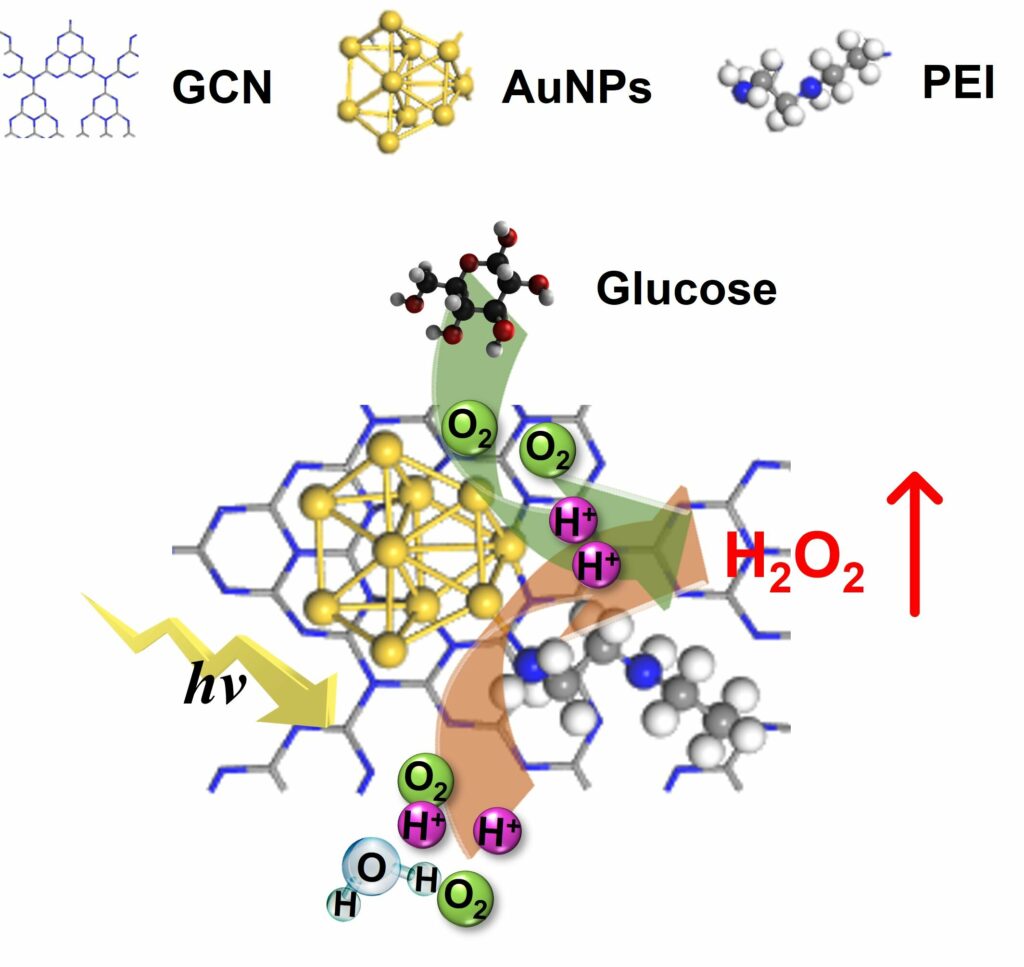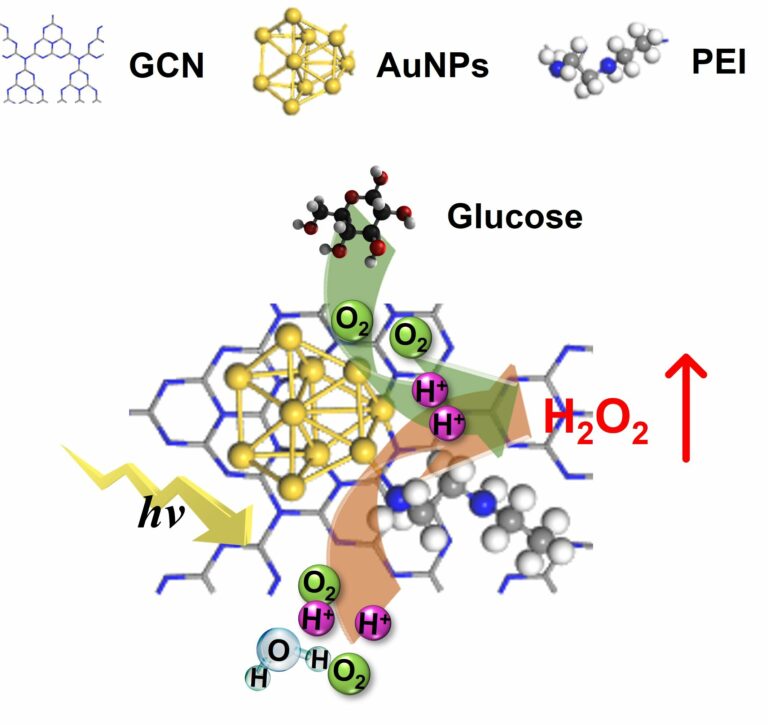Scientists Create Biomimetic Photo-Coupled Catalysis for the Production of H₂O₂
Prof. Wan Yinhua, leading a research group at the Institute of Process Engineering of the Chinese Academy of Sciences, has successfully developed a catalyst that exhibits both photocatalytic and biomimetic catalytic activity for the synthesis of hydrogen peroxide (H2O2).
To achieve this, the team employed a strategy involving the deposition of gold nanoparticles (AuNPs) onto graphite carbon nitride (GCN) nanosheets, utilizing polyethyleneimine (PEI) as a “bridge” between the two materials. The findings of this study have been published in the Chemical Engineering Journal.
Hydrogen peroxide (H2O2) is widely recognized as an environmentally friendly oxidant and finds applications in various fields such as medical treatments, environmental remediation, fine chemicals, and electronics industries. However, the conventional method of H2O2 production, known as the anthraquinone process, suffers from several drawbacks including high energy consumption, the use of organic solvents, and safety hazards. Therefore, there is an urgent need to develop a sustainable and eco-friendly manufacturing process for H2O2.
Solar-driven photocatalysis presents a promising alternative approach for H2O2 production, and GCN has emerged as a popular choice in the field of photocatalysis due to its simple synthesis, cost-effectiveness, stable physical and chemical properties, and broad light absorption spectrum. However, GCN nanosheets alone exhibit limited performance in photocatalytic H2O2 production in pure water due to the high energy barrier associated with water dissociation and the low efficiency of charge carrier separation.

Ethanol, isopropanol, and benzyl alcohol are commonly used as sacrificial agents to improve the selectivity of oxygen reduction. However, the use of these organic agents has negative environmental impacts, which hinders the sustainability of H2O2 production. Therefore, it is essential to engineer a GCN material that can efficiently separate electron-hole pairs to facilitate water oxidation and oxygen reduction.
Prof. Wan stated that they developed a composite catalyst called PEI-GCN/Au by loading AuNPs (enzyme mimics) on GCN (photocatalyst) nanosheets using PEI as a ‘bridge’. This composite catalyst was inspired by the photo-enzyme-coupled catalytic system found in chloroplasts.
The introduction of PEI and AuNPs helps modify the electronic structure of GCN, enabling the efficient separation of photogenerated carriers. The surface plasmon resonance of AuNPs, when stimulated by incident light, enhances the activation of glucose molecules, thereby increasing their reactivity with O2 and improving the catalytic production of H2O2 similar to glucose oxidase. The grafting of PEI and the addition of glucose also enhance the adsorption of O2 on the catalyst surface.
The PEI-GCN/Au composite exhibits remarkable efficiency in producing H2O2 (270 μmol g-1 h-1) when exposed to visible light, utilizing glucose, H2O, and O2 as the sole reactants. Consequently, both the biomimetic catalytic and photocatalytic reduction of O2 to H2O2 are significantly enhanced, resulting in a notable synergistic enhancement effect of 175%.
According to Prof. Luo Jianquan, the corresponding author of this study, this research establishes a new paradigm by combining biomimetic catalysis and photocatalysis to co-produce chemicals. It not only provides valuable insights into the development of materials for efficient H2O2 production but also introduces an innovative concept of integrating biocatalysis and photocatalysis.
This article is republished from PhysORG under a Creative Commons license. Read the original article.
Do not forget to share your opinion with us to provide you with the best posts !




0 Comments